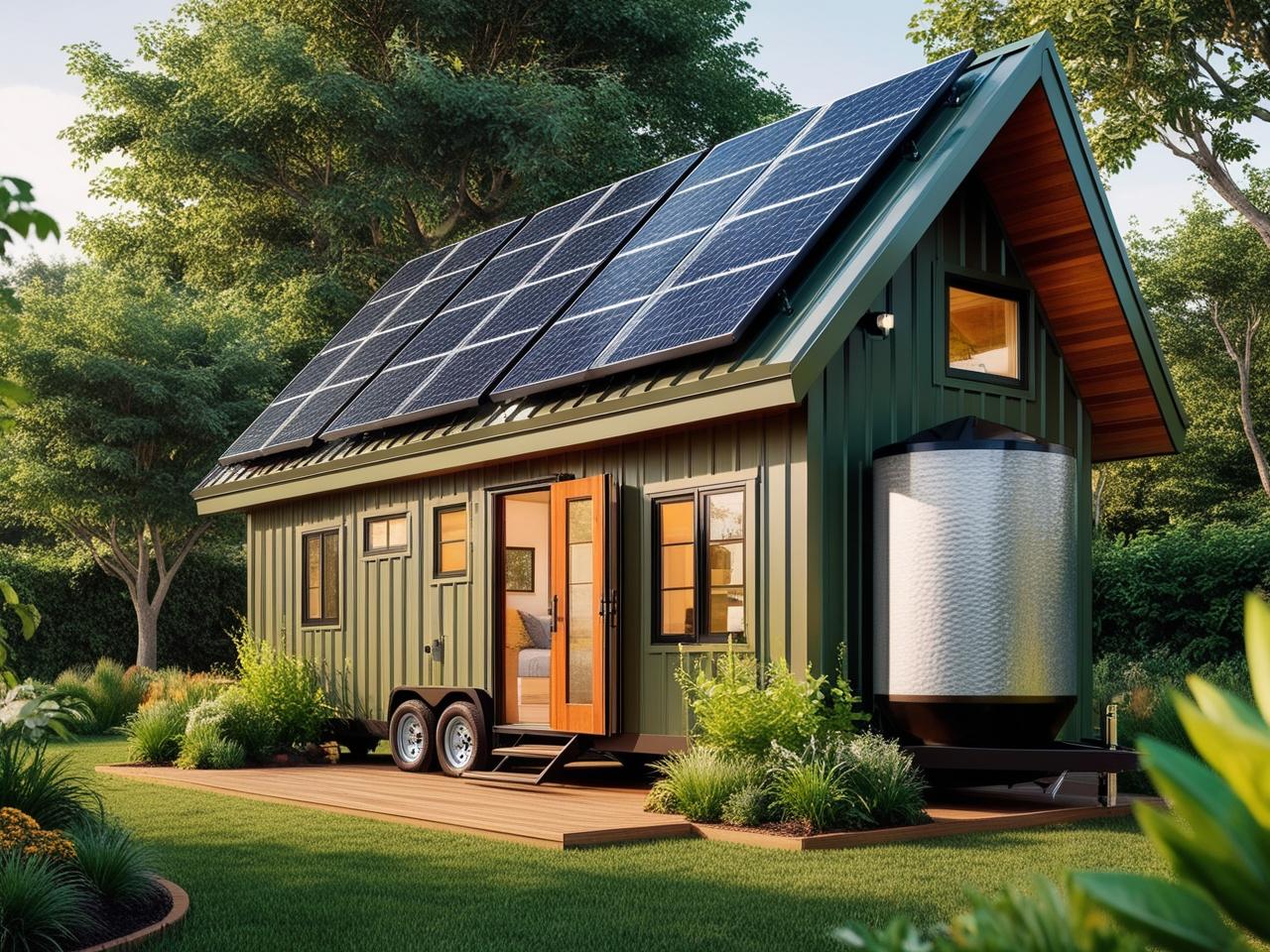Eco Friendly
Rainwater Harvesting for Tiny Homes: Is It Worth It?

Rainwater harvesting is an increasingly popular method for tiny home dwellers seeking sustainable and self-sufficient living. By collecting and utilizing rainwater, homeowners can reduce their reliance on municipal water systems, lower utility costs, and minimize their environmental footprint. But is rainwater harvesting worth the investment for tiny homes? Let’s explore the benefits, considerations, and steps involved in implementing a rainwater collection system.The Suntinylair.com
Benefits of Rainwater Harvesting for Tiny Homes
Environmental Sustainability
Collecting rainwater reduces the demand on local water supplies and decreases stormwater runoff, which can carry pollutants into waterways. By harnessing rainwater, tiny home residents contribute to water conservation efforts and promote a healthier ecosystem. According to TinyLair.com, using rainwater lessens the energy consumption associated with water treatment and transportation, further reducing one’s carbon footprint. tinylair.com
Cost Savings
Utilizing harvested rainwater for non-potable uses such as irrigation, laundry, and toilet flushing can lead to significant reductions in water bills. Over time, these savings can offset the initial costs of installing a rainwater collection system. For instance, Zero Energy Tiny House Hub provides a cost breakdown, estimating that components like storage tanks range from $100 to $500, and sediment filters between $20 to $100 per filter. tinylair.com Zero Energy Tiny House
Self-Sufficiency
For those living off-grid or in areas with limited access to municipal water, rainwater harvesting offers a reliable and independent water source. This autonomy enhances the resilience of tiny homes, allowing residents to thrive in various conditions without depending on external water supplies.tinylair.com
Key Considerations
System Components
A typical rainwater harvesting system includes:Innovative Water Solutions LLC+3Zero Energy Tiny House+3tinylair.com+3
- Collection Surface: Often the roof, made of materials suitable for water collection.tinylair.com
- Gutters and Downspouts: To channel rainwater from the roof to storage tanks.tinylair.com
- Storage Tanks: Containers that hold collected rainwater, available in various sizes and materials.
- Filtration Systems: To remove debris and contaminants, ensuring water quality.
Understanding these components is crucial for designing an efficient system tailored to your tiny home’s needs. tinylair.com
Legal Regulations
Before installing a rainwater harvesting system, it’s essential to research local regulations and permitting requirements. Some regions have specific guidelines or restrictions on rainwater collection, especially for potable use. Consulting resources like the American Rainwater Catchment Systems Association (ARCSA) can provide valuable information on best practices and compliance. Zero Energy Tiny House+1tinylair.com+1
Maintenance
Regular maintenance is necessary to keep the system functioning effectively. This includes cleaning gutters, inspecting and cleaning storage tanks, and replacing filters as needed. Proper upkeep ensures the longevity and safety of the harvested water.tinylair.com
Real-World Examples
Many tiny home enthusiasts have successfully integrated rainwater harvesting into their lifestyles. For instance, a couple living off-grid in a tiny shipping container home utilizes a rainwater collection system for washing purposes, demonstrating the practicality of such systems in daily life. Similarly, individuals like Robyn Swan have embraced rainwater harvesting to achieve self-sufficiency and reduce living expenses. The Scottish SunThe Sun
Conclusion
Implementing a rainwater harvesting system in a tiny home offers numerous benefits, including environmental sustainability, cost savings, and increased self-sufficiency. While there are considerations such as initial setup costs, legal regulations, and maintenance, the long-term advantages often outweigh these challenges. For those committed to sustainable living, rainwater harvesting is a worthwhile investment that aligns with the ethos of the tiny home movement.
FAQs
Q: Is rainwater safe to drink?
A: With proper filtration and purification, rainwater can be made potable. It’s essential to use appropriate filters and regularly test the water quality to ensure safety. Zero Energy Tiny House
Q: How much does it cost to install a rainwater harvesting system?
A: Costs vary based on system size and components. For example, storage tanks can range from $100 to $500, and filtration systems may add additional expenses. Budgeting carefully and considering DIY options can help manage costs. Zero Energy Tiny House
Q: Can I install a rainwater harvesting system in an area with low rainfall?
A: Yes, but you may need a larger storage capacity to collect and store water during infrequent rain events. Assessing local rainfall patterns will help design an appropriate system. Zero Energy Tiny House
Q: Are there legal restrictions on collecting rainwater?
A: Regulations vary by location. It’s crucial to research local laws and obtain necessary permits before installing a system to ensure compliance.
Q: What maintenance does a rainwater harvesting system require?
A: Regular tasks include cleaning gutters and downspouts, inspecting and cleaning storage tanks, and replacing filters as needed to maintain water quality and system efficiency.Zero Energy Tiny House
For more insights on energy-efficient and off-grid solutions for tiny homes, consider exploring this resource: Energy-Efficient Tiny Homes: Solar and Off-Grid Solutions in 2025.
